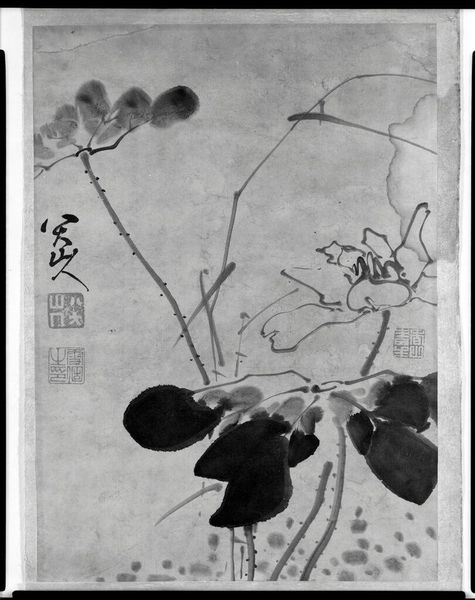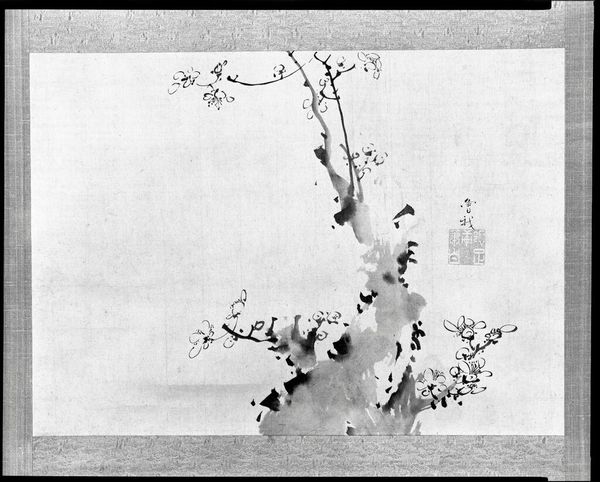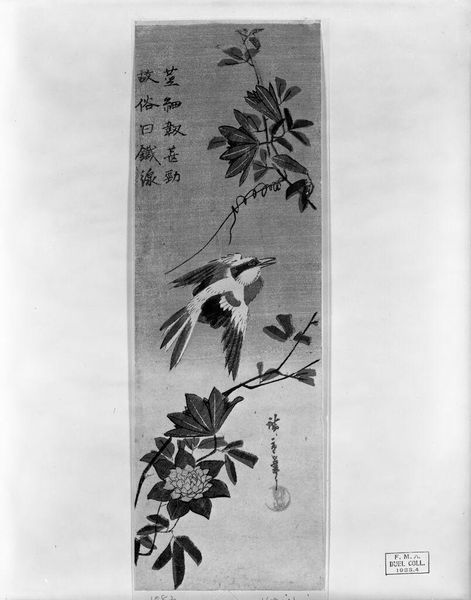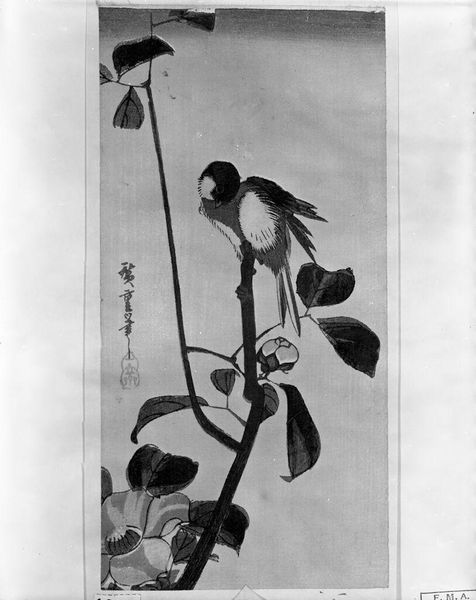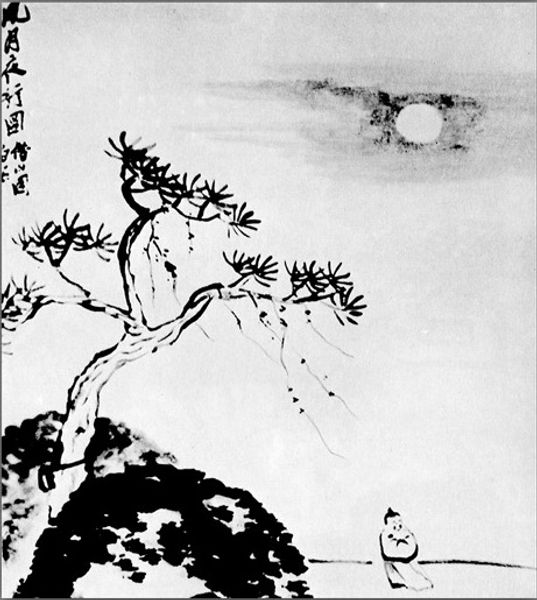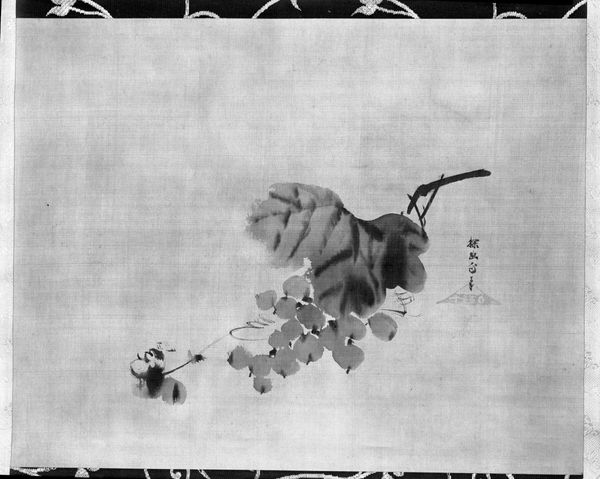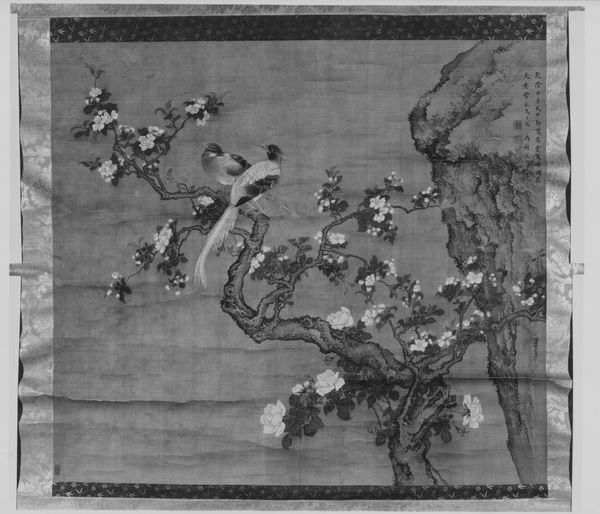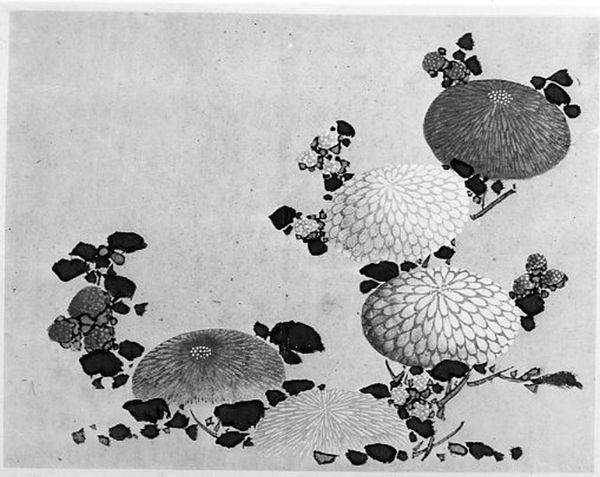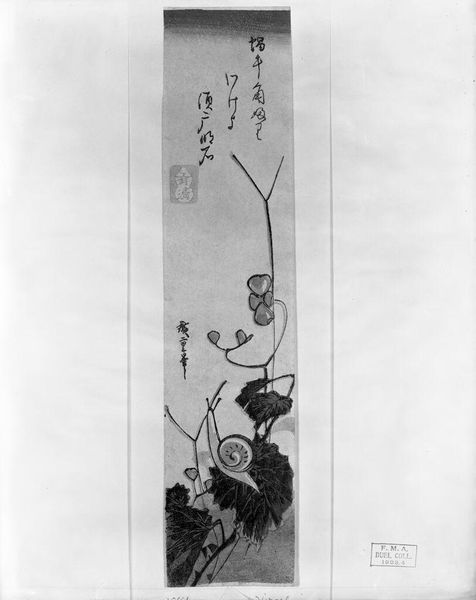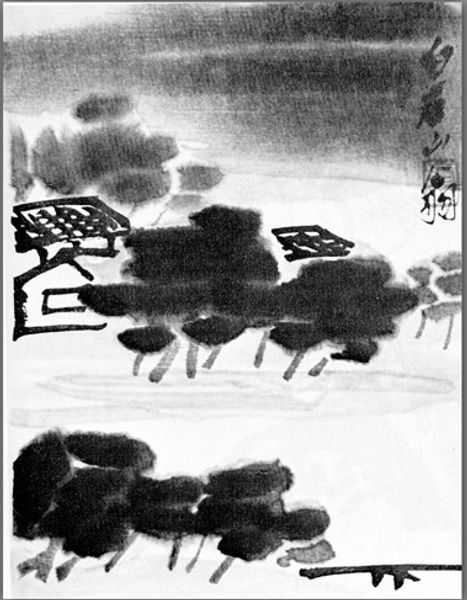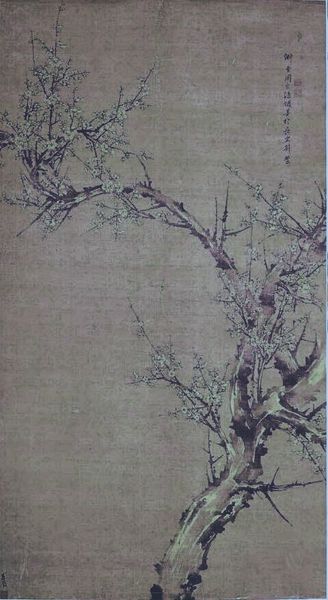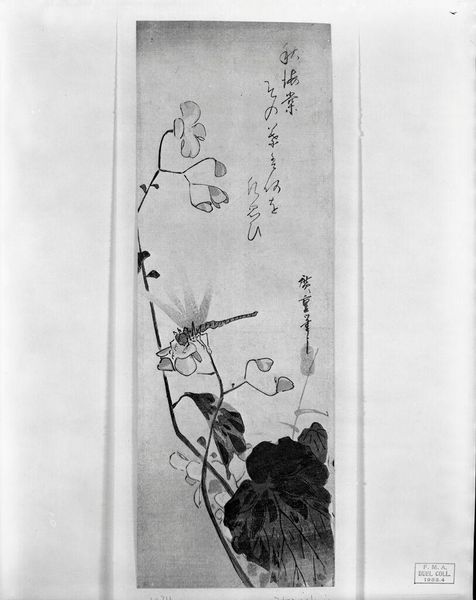
painting, paper, ink
#
fish
#
painting
#
carving
#
asian-art
#
landscape
#
figuration
#
paper
#
ink
#
line
Dimensions: 39 5/16 x 16 1/8 in. (99.8 x 41 cm)
Copyright: Public Domain
Curator: Nishiyama Hōden’s “White Roses and Fish in Stream," dating from sometime between 1807 and 1867, offers a fascinating look at Japanese ink painting. Editor: My immediate reaction is serenity. The monochromatic palette, the spare composition... it evokes a sense of tranquility. Almost meditative, in a way. Curator: That's certainly a common interpretation. The artist, who painted this with ink on paper, worked at the intersection of various artistic traditions that circulated in Kyoto at the time. One was connected with wider trends within East Asian art of evoking nature and inner landscapes. Editor: There's a distinct hierarchy presented, isn’t there? The roses are dominant, almost anthropomorphic in their stance above the stream with the tiny, silhouetted fish. It brings to mind issues of class and dominance but also themes related to humans in connection with nature. I also appreciate the lack of color. Everything appears as shadows or ghosts, allowing us to see the true reality in everything. Curator: That is one possibility to read the lack of color, of course. We know black and white monochrome painting, *suibokuga*, was associated with Zen Buddhism which also aimed to reveal inner truths, while literati painting also circulated in Japanese society among intellectuals at the time which favored naturalism with political leanings. These forms circulated widely throughout Japan. Editor: Yes, the associations are potent. When we bring that knowledge into conversation with the work itself, new insights about symbolism emerge. This image acts almost as a screen where social, political and environmental consciousness come to converge. Curator: Exactly. I appreciate how your analysis reminds us to think more broadly about the conversations this artist may have had in the dynamic art world of his era. Editor: And by extension, conversations we can continue through this artwork today.
Comments
No comments
Be the first to comment and join the conversation on the ultimate creative platform.

